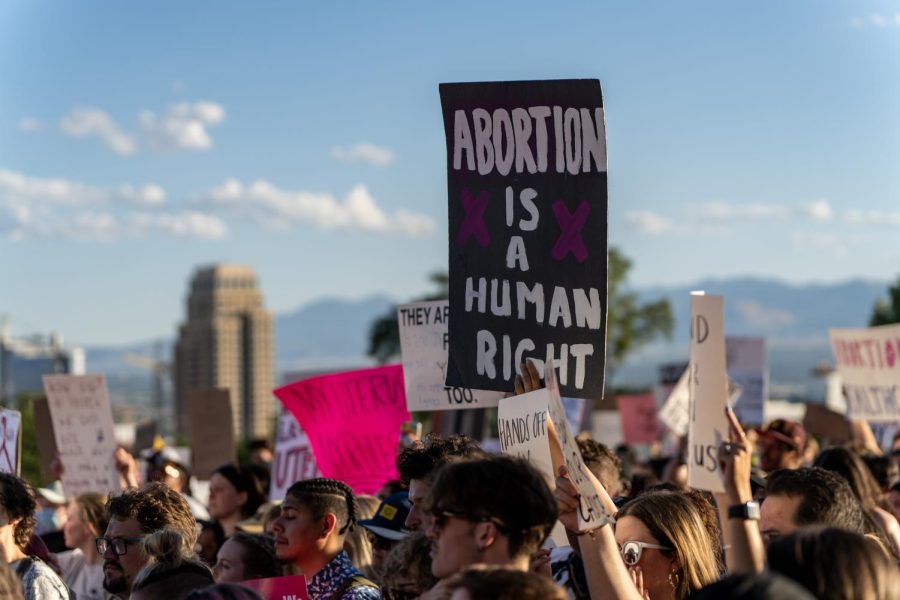Posted on 24 June 2022.
After coming out as transgender in 2019, Alex Jay Lore, who uses both he and they pronouns, started hormone replacement therapy. Then, in 2020, he had top surgery through the University of Utah’s Transgender Health Program.
Lore intentionally worked with a surgeon who specialized in non-binary care because he found even transgender healthcare to be binary.
“Where it was like, ‘Oh, you’re either transitioning from male to female or female to male,’” Lore said. “There wasn’t really a whole lot of non-binary inclusion.”
This was Lore’s first surgery — he was anxious, but found clear communication and support through the program.
He received some services through other programs but decided to switch his care over entirely to the U’s program because they have a patient coordinator and trans and LGBTQ+ staff members, which aren’t always offered elsewhere.
Setting the Standard
The U’s Transgender Health Program began back in 2017 when healthcare providers decided to put action behind what they viewed as a gap in the coordination of care for transgender and gender-diverse community members.
These providers were providing care for transgender patients before the 2017 start date, but it became clear that more coordinated, centralized care was needed.
In 2018, they began offering all gender-affirming surgeries which include top — chest masculinization, breast augmentation, etc. — and bottom — vaginoplasty, phalloplasty, etc. — surgery.
“And so since then, we’ve been offering comprehensive, coordinated care across the lifespan,” said Program Coordinator Ariel Malan, who uses she and they pronouns. “So in addition to offering gender-affirming surgery, we also offer medical services including things like gender-affirming primary care and hormone therapy.”
They also offer voice therapy, fertility services, OB-GYN care and gender-affirming hysterectomies. The program additionally partners with physical therapy and laser hair removal offered by the U.
They have an adolescent medicine clinic, where providers are trained in working with transgender youth.
In their various support services, there are two transgender providers who answer phone calls to help patients navigate the healthcare system. Patients call in not knowing where to start — they want to know what services are available, how to access them and what their insurance will cover.
“Those patient coordinators are a great resource to give people some of those answers and then get them to the right place to schedule those appointments,” Malan said.
Not only does the program offer clinical services, but they also are committed to advancing knowledge and well-being for the trans and gender-diverse community through research and educational opportunities.
Partners, allies and parents can attend patient education seminars and learn about name and gender marker changes, expectations for gender-affirming surgery and how to support those undergoing these processes.
For gender marker changes, the program can provide necessary letters for the legal changes that may come with that process.
They also have a peer support program, where patients volunteer with the program to help support other patients in their journey. This could be anything from emotional support to explaining what to pack for surgery to actually attending visits with their peer, if that interests them.
“So it’s a really flexible relationship,” Malan said. “And then our program just matches people and then they take that relationship from there, how they want to establish that.”
The program hosts an annual conference to spread more information about how to best serve transgender and gender-diverse patients outside of the U community. Anyone who wants to learn more can also take their free online Canvas module about how to serve these communities.
As a transgender individual and educator, Lore feels this educational component is a huge asset to not just Salt Lake City, but the state of Utah as a whole.
“I think honestly, that’s key as we’re tackling things like anti-trans [legislation] and everything else that’s going on, like politically and socially, that can harm and victimize trans people,” Lore said. “I think education and outreach and having a program where it’s safe to ask these kinds of questions, but that’s also run by a lot of people that are part of the queer and trans community [is important to have].”
The program differs from the larger hospital because it focuses on a particular subset of the general Utah population. To guide its practices, it follows the World Professional Association for Transgender Health guidelines, which include standards of care for various areas like mental health, hormone therapy and surgery, among others.
While the program is more well versed in these best practices and clinical guidelines, they work with the broader U Health system to make sure some of these practices — such as using chosen names and pronouns, establishing trauma-informed care and informing patients of services offered by the program — are in place elsewhere too.
“Oftentimes a transgender person may come to us for that gender-affirming care, but then they may need other services in the health system, like they may break a bone or they might be here for cancer care, or something else,” Malan said.
Navigating Anti-Trans Legislation
With pending and enacted bills to ban gender-affirming care for youth across the nation, and the Utah legislature recently passing a bill banning transgender girls from participating in sports aligning with their gender identity, many trans Utahns are worried about the future of their care.
Malan said the legislation has impacted the program and its patients greatly. Parents and youth call in worried that their care will be taken away from them.
“We do usually field a lot of calls and try to help patients understand that we will continue to see them and support them as best we can,” they said. “So we, as a nonprofit institution cannot get involved with the legislative process, but we can continue to support our patients. And we can continue to spread the education.”
Something the program prioritizes when providing training or educational opportunities is reminding people that “gender-affirming care is evidence-based.”
“And it is medically necessary for transgender and gender diverse people who are struggling with gender dysphoria,” Malan said. “So many times people just don’t understand that there is an evidence-based foundation for the care that we are providing in this program.”
After receiving care through the program, Lore then got involved with the patient and family advisory board, which looped him into the inner workings of making policy and more inclusive communication.
As board members battling anti-trans legislation, they have been working on ensuring medical providers are aware of how to use chosen names without alienating or outing people. They are also working to make their services more accessible to various underserved populations in Utah such as unhoused individuals.
“I know a lot of their intake procedures and staff training has definitely changed over the last few years where things have become much more affirming and much more inclusive in the way questions are being asked and the way patients are being surveyed, in the way they’re doing outreach,” he said. “I think it’s becoming better and better as they’re growing.”
Doing this Work
In their undergraduate education, Malan pursued psychology and neuroscience. She eventually found healthcare administration which was a major turning point because she saw how impactful this field could be on community health.
“I felt like going to healthcare administration would allow me to have a larger impact in general on communities,” she said. “And I’ve always had a passion for LGBTQ+ health because there is such a gap in knowledge and resources in regards to communities being able to access affirming care, so that kind of just went hand in hand for me.”
When she was undergoing her master’s education, she met someone who was in the Transgender Health Program. She ended up writing her thesis on best practices of gender health programs in the United States.
“I love this job and I love being able to have conversations about access and better serving LGBTQ+ communities, and making sure that people have the knowledge and resources to do that, wherever they are,” they said.
To Malan, the most important thing is that these are not specialty care services because any primary care provider can provide these services with accurate knowledge and resources.
“That, in turn, creates better access for communities to get that care,” she said.
Moving forward, Malan hopes the broader community can acknowledge the disparities in information surrounding this care. She said most medical schools do not have curriculum about how to serve minority populations, including LGBTQ+ patients. Instead of entering their new position with accurate knowledge of how to provide gender-affirming care, they start learning while on the job.
“I think another thing is making sure that our representatives at the legislative level are aware of what our needs are as a community, and that means making sure that we are looking at SOGI — sexual orientation and gender identity — data as a whole,” she said. “Because if we’re not counting who is in our community, we’re not able to measure the impact.”
Malan wants people to know that this program is community-based. They prioritize representation within the program and are always open to feedback from the community on how to improve the patient experience.
As a queer and gender-diverse individual, Malan finds it helpful when allies support them in their work so they can have a space in areas where they typically wouldn’t.
“Having these stories and having this visibility is really important for us to keep advancing the mission of just creating more access,” they said.
Lore has seen different providers throughout the city and state. He hopes the U’s program will expand and network with other providers to further lessen discrepancies in care.
“As I’ve gotten involved with all of this, I’m definitely seeing that there’s just so much work still to be done,” they said. “Specifically like when it comes to inclusion and representation — like including more people of color, including more people from all kinds of cultural and socio-economic backgrounds.”
k.silverstein@dailyutahchronicle.com
@chronykayleigh
The post U’s Transgender Health Program Expands Access to Necessary Care appeared first on The Daily Utah Chronicle.




